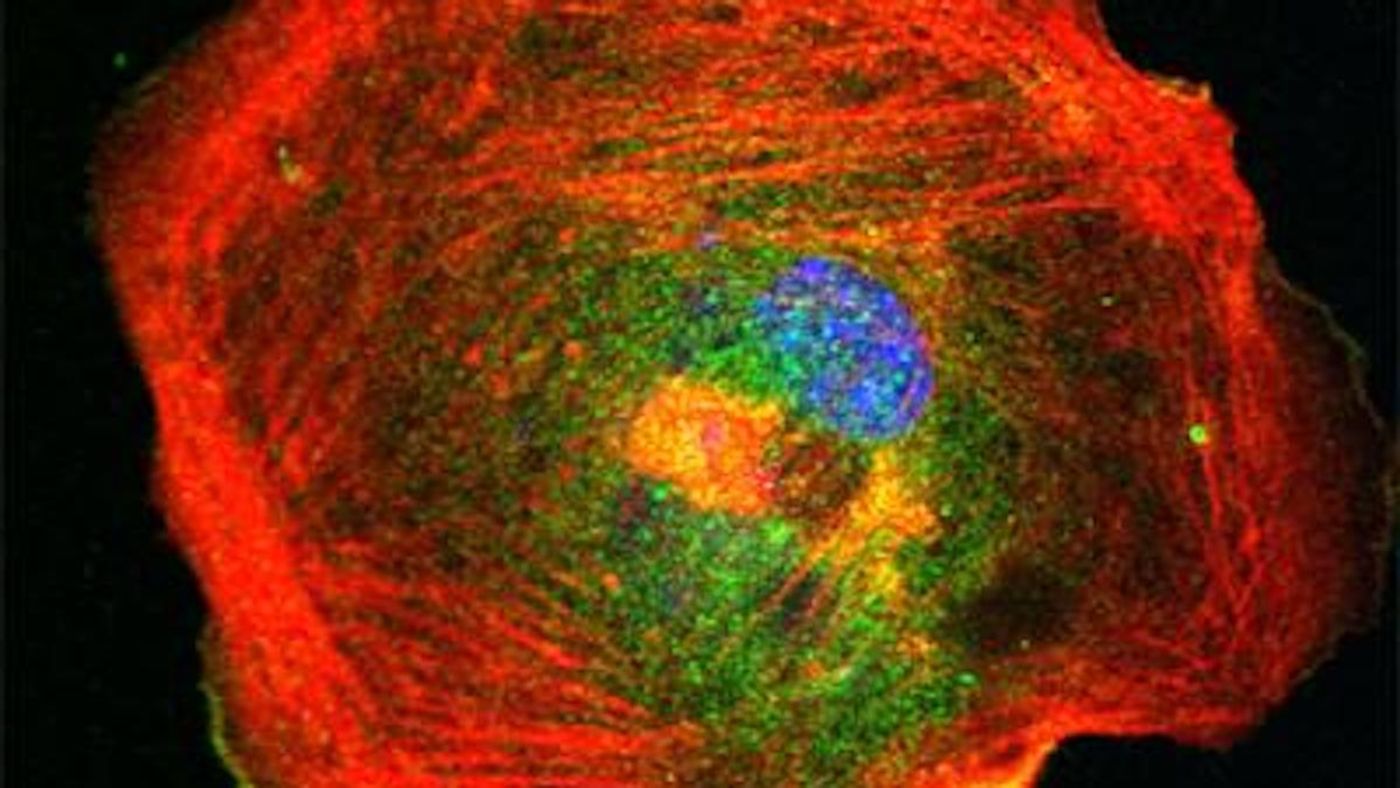Catching Cells in the Act of Self-Repair
As we bend, stretch, and move, the cells that make up our body must withstand a lot of mechanical stress. When cells get overstretched they have to be able to repair themselves. While the process has been observed with microscopy, researchers have now learned more about the biochemical mechanisms underlying it. The findings, which show how a cell detects the forces it's subjected to and triggers repairs, have been reported in the Proceedings of the National Academy of Science (PNAS).
"Cells are constantly generating forces and responding to them. They are being pulled on by their environment," said Jonathan Winkelman, a postdoctoral researcher in the lab of Margaret Gardel, a Professor in the Department of Physics and the Pritzker School of Molecular Engineering at the University of Chicago.
A cytoskeleton in the cell, a network of filaments that includes a protein called actin, helps cells to move, grow, maintain their structure, and more.
"People had observed a protein called zyxin in cells going to these stretched actin structures previously, but were not really sure how it was working or how widespread this function was," said Winkelman.
Researchers at UChicago found that proteins zyxin and paxillin can sense stress in the actin cytoskeletons. In laboratory tests, proteins assemble around places in the actin filaments where damage has happened after a mechanical force was applied.
In this work, the scientists found that the LIM domain family of proteins can detect damage, and by adding fluorescent tags to these proteins, they could observe many of them binding to areas that were damaged.
"We were looking at this group of proteins to mount this detection and repair response in highly complex cells that contain thousands of different types of proteins," said Winkelman. "However, to really understand this process, we needed to purify the essential components and rebuild the whole process outside of the cells."
The researchers generated an ultra-pure sample of the protein and applied a tool called Total Internal Reflection Fluorescence microscopy. Since mammals as well as yeast can sense forces with the LIM family, the function is likely ancient, conserved, and important in many ways.
"Cellular force-sensing via LIM domains could inform many other processes besides self-repair, such as controlling stem cell fate, cell proliferation, or cell migration, and many more diverse signaling pathways that need further exploration," said Gardel.
"The work furthers our understanding of fundamental science—how cells detect and process mechanical signals, how diverse mechanical pathways are regulated in epithelial cells and adherent tissues," said Gardel. "But there are also applications to building soft, responsive materials in a nonbiological context that have [the] same recognition process."
Sources: Phys.org via University of Chicago, PNAS









